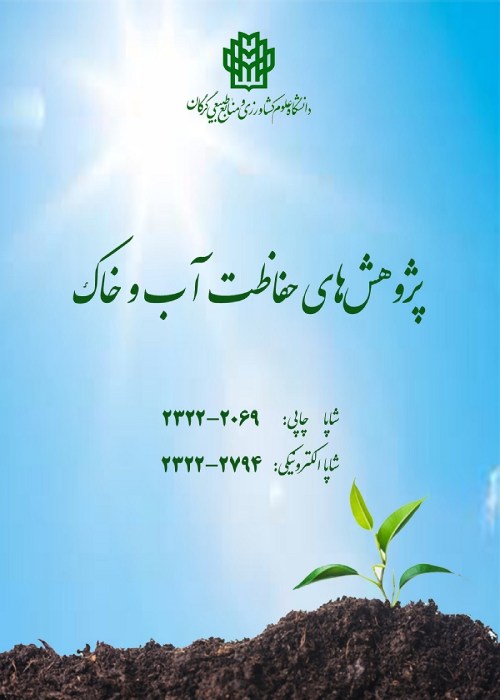Competitive sorption of copper and manganese from aqueous solutions by discarded tire rubber
Author(s):
Abstract:
Background And Objectives
Some of heavy metals such as copper (Cu) and manganese (Mn) are toxic and represent as hazardous pollutants due to their persistence in the environment. Heavy metals can be introduced into soils and aqueous environment by natural processes or anthropogenic activities. They are non-degradable in nature and highly toxic to plants, animals and human beings. Various methods exist for the removal of heavy metal ions from solution, such as filtration, chemical precipitation, ion exchange and sorption by activated carbon and others. Discarded tires are an interesting and inexpensive medium for the sorption of heavy metals. There has been little research on heavy metal sorption into tire rubber in competitive systems. Therefore the present study was conducted to assess the sorption behavior of Cu and Mn on different size of tire rubber in a competitive system.Materials And Methods
The finely ground discarded tire rubber with three sizes including 0.088-0.125, 0.177-0.250 and 0.353-0.500 mm were prepared from Yazd Tire Company in Iran. A batch experiment was conducted by adding of 200 mg of ground tire to 10 ml of Cu aqueous solution of the desired concentration (10 to 50 mg L-1). After 24h, supernatant was separated by filtration and analyzed for remaining Cu and Mn by atomic absorption spectroscopy technique.Results
Sorption of Cu and Mn on tire rubber increased with increasing of metal concentration from 0 to 50 mg L-1. The greatest sorption of Cu (1088.9 mg Kg-1) was found at the smallest tire rubber size (0.088-0.125 mm) and decreased by 35% when the largest size (0.353-0.500 mm) was used. At the highest concentration, sorption of Cu was restricted by Mn competition. In the whole range of studied metal concentrations, Mn occupied the least sorption sites of tire rubber. The sorption of Mn was not affected by tire rubber size and was restricted by Cu competition. Based on average, the experimental data were fitted in Langmuire (R2=0.94) better than Freundlich one (R2=0.87), showing monolayer sorption of Cu and Mn on discarded tire rubber. The values of maximum sorption capacities calculated from the fitted Langmuir equation showed that Cu sorption was higher than Mn. There was an increase in the qm values of Mn when the tire rubber diameter decreased. In this study, separation factor (RL) was used to predict if an adsorption system is favorable or unfavorable. In all cases, the values of RL were between 0 and 1, pointing to the favorable sorption of Cu and Mn on three size of rubber.Conclusion
Results clearly showed that ground discarded tire rubber (especially, the smallest size) are an effective adsorbent for the removal of Cu and Mn in competitive system. The equilibrium sorption isotherm of Cu and Mn onto discarded tire rubber is well described by the Langmuir and Freundlich models, but the Langmuir model fits the experimental data better than the Freundlich model. Keywords:
Language:
Persian
Published:
Water and Soil Conservation, Volume:23 Issue: 1, 2016
Pages:
261 to 272
magiran.com/p1564976
دانلود و مطالعه متن این مقاله با یکی از روشهای زیر امکان پذیر است:
اشتراک شخصی
با عضویت و پرداخت آنلاین حق اشتراک یکساله به مبلغ 1,390,000ريال میتوانید 70 عنوان مطلب دانلود کنید!
اشتراک سازمانی
به کتابخانه دانشگاه یا محل کار خود پیشنهاد کنید تا اشتراک سازمانی این پایگاه را برای دسترسی نامحدود همه کاربران به متن مطالب تهیه نمایند!
توجه!
- حق عضویت دریافتی صرف حمایت از نشریات عضو و نگهداری، تکمیل و توسعه مگیران میشود.
- پرداخت حق اشتراک و دانلود مقالات اجازه بازنشر آن در سایر رسانههای چاپی و دیجیتال را به کاربر نمیدهد.
In order to view content subscription is required
Personal subscription
Subscribe magiran.com for 70 € euros via PayPal and download 70 articles during a year.
Organization subscription
Please contact us to subscribe your university or library for unlimited access!



